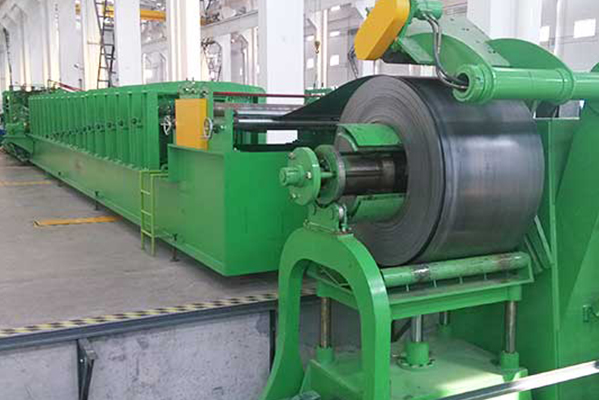Navigation Menu
Contact Us
- Email:
- info@wxavatar.com
- Address:
- Yurong Village, Yuqi Street, Huishan District, Wuxi, China.
Release Date:Apr 03, 2025 Visit:47 Source:Roll Forming Machine Factory
Roll forming machines are essential in the metalworking industry, used to shape metal sheets and coils into desired profiles with consistent cross-sections. The performance, durability, and efficiency of these machines depend heavily on the materials used in their construction. This article explores the key materials used in roll forming machines, focusing on their properties and applications.
1. Structural Frame Materials
The frame of a roll forming machine must be robust to withstand high mechanical stresses. Common materials include:
Carbon Steel – Widely used due to its strength, affordability, and weldability. It provides excellent rigidity for heavy-duty applications.
Stainless Steel – Preferred in corrosive environments (e.g., food processing or chemical industries) due to its rust resistance.
Cast Iron – Used in older or heavy-duty machines for its vibration-damping properties.
2. Roller Materials
Rollers are the most critical components, directly shaping the metal. They must be wear-resistant and durable. Common materials include:
Tool Steel (D2, A2, M2) – High-carbon, high-chromium steels provide excellent hardness and wear resistance.
Carbide (Tungsten or Titanium Carbide) – Used for high-speed or abrasive material forming, offering superior longevity.
Case-Hardened Steel – Surface-hardened to resist wear while maintaining a tough core.

3. Shafts and Bearings
Shafts and bearings support the rollers and endure significant rotational forces. Common materials include:
Alloy Steel (4140, 4340) – Heat-treated for high strength and fatigue resistance.
Stainless Steel (440C, 17-4PH) – Used in corrosive environments.
Ceramic or Hybrid Bearings – Reduce friction and increase lifespan in high-speed applications.
4. Lubrication and Coatings
To minimize wear and friction, roll forming machines often use:
Dry Film Lubricants (PTFE, Molybdenum Disulfide) – Reduce friction without attracting debris.
Hard Chrome or Nickel Plating – Applied to rollers to enhance wear resistance.
Titanium Nitride (TiN) Coating – Improves surface hardness and reduces sticking.
5. Other Components
Guides and Side Rolls – Often made from hardened steel or polyurethane to prevent material scratching.
Hydraulic/Pneumatic Parts – Constructed from stainless steel or aluminum to resist corrosion.
Conclusion
The choice of materials in roll forming machines depends on factors like load capacity, production speed, and environmental conditions. High-strength steels, carbide rollers, and advanced coatings ensure longevity and precision in metal forming operations. By selecting the right materials, manufacturers can optimize performance and reduce maintenance costs.